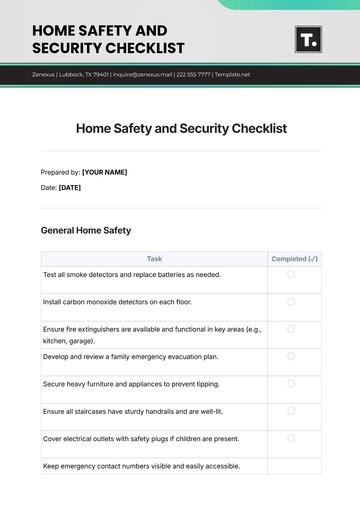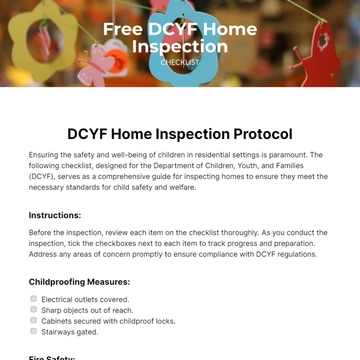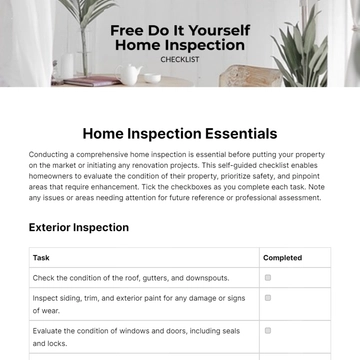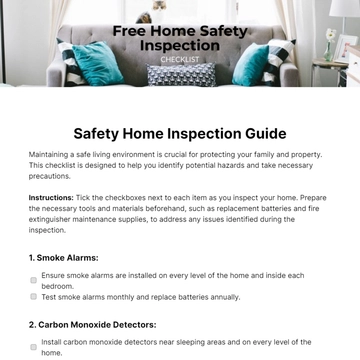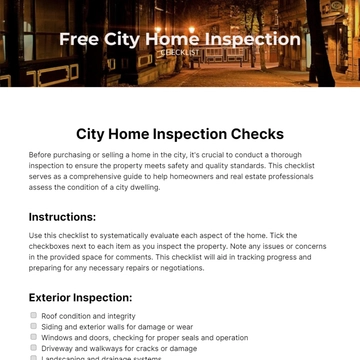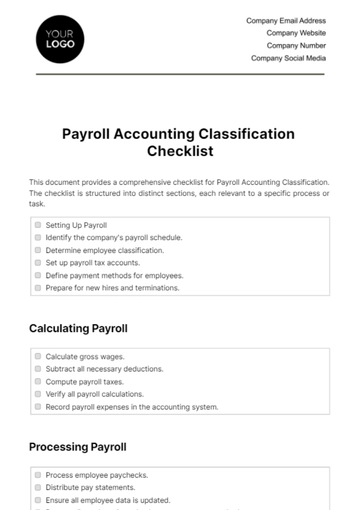Free Employee Handbook Legal Compliance Checklist HR
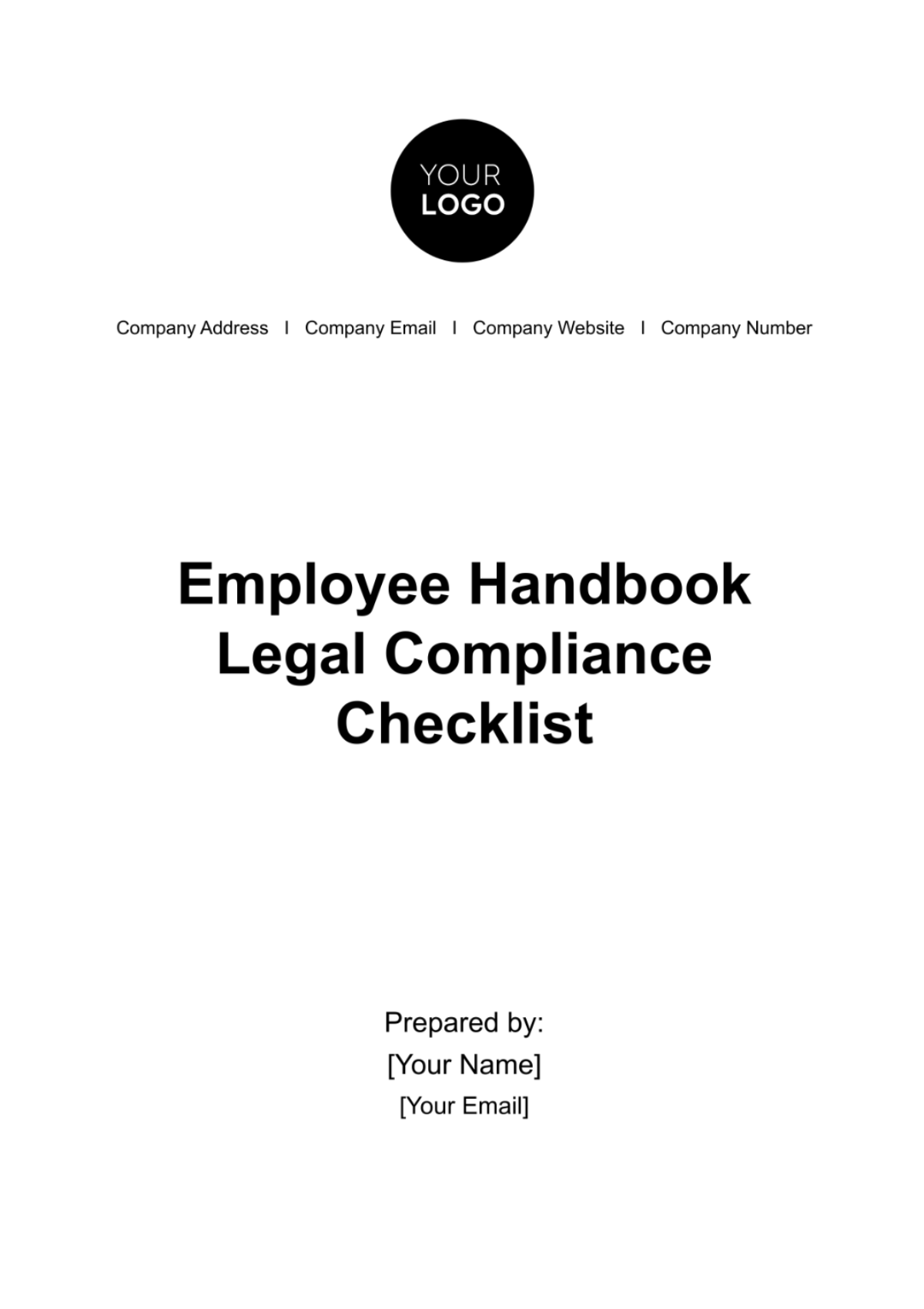
TABLE OF CONTENTS
Overview..........................................................................................................................3
I. Equal Employment Opportunity (EEO) Laws.............................................................3
II. Anti-Harassment Policies...........................................................................................4
III. Wage and Hour Laws.................................................................................................4
IV. Family and Medical Leave Act (FMLA) and Leave Policies...................................4
V. Workplace Safety........................................................................................................5
VI. Privacy and Confidentiality.......................................................................................5
VII. Intellectual Property.................................................................................................5
VIII. Employment Contracts and Agreements..............................................................6
IX. Benefits and Leave Policies......................................................................................6
X. Code of Conduct and Ethical Standards..................................................................6
XI. Disciplinary Procedures............................................................................................6
XII. Termination Policies..................................................................................................7
XIII. Reporting Procedures.............................................................................................8
XIV. Acknowledgment of Receipt..................................................................................8
XV. Updates and Revisions............................................................................................9
Overview
An Employee Handbook Legal Compliance Checklist is a crucial tool to ensure the employee handbooks align with federal, state, and local employment laws. This checklist aids in verifying that policies and procedures provided in the handbook are legally sound, protecting both the employer and employees while fostering a compliant and equitable workplace.
To effectively use an Employee Handbook Legal Compliance Checklist, follow these steps:
1. Review the Handbook: Carefully read through your organization's employee handbook to understand its content and policies.
2. Cross-Check Policies: Compare each section of the handbook with the items on the checklist, ensuring alignment with relevant laws and regulations.
3. Identify Non-Compliance: Note any areas where the handbook falls short of legal requirements or lacks necessary policies.
4. Make Revisions: Work with HR, legal counsel, or relevant experts to update the handbook to address identified non-compliance issues.
5. Record-Keeping: Maintain records of handbook revisions and distribution, as this documentation can be important in case of legal disputes.
By using this checklist methodically, organizations can create and maintain employee handbooks that are legally compliant and supportive of a fair and secure work environment.
I. Equal Employment Opportunity (EEO) Laws
● Affirmative Statement: The handbook contains a clear and affirmative statement of [Company Name]'s commitment to providing equal employment opportunities to all employees and applicants without regard to race, color, religion, sex, national origin, age, disability, or genetic information.
● Non-Discrimination Policies: Policies explicitly prohibiting discrimination based on the aforementioned protected categories are included. These policies should cover all aspects of employment, including recruitment, hiring, promotion, compensation, and termination.
● Reporting Procedures: The handbook outlines clear and accessible procedures for employees to report discrimination complaints. It should also describe the process for investigating and addressing these complaints, including the role of HR or relevant personnel.
II. Anti-Harassment Policies
● Comprehensive Policy: The handbook includes a comprehensive anti-harassment policy that explicitly addresses sexual harassment and other forms of workplace harassment. It should define harassment, provide examples, and explain that it is strictly prohibited.
● Reporting Mechanisms: Procedures for reporting harassment incidents should be provided, including multiple reporting channels such as supervisors, HR, and anonymous reporting hotlines.
● Commitment to a Harassment-Free Workplace: The handbook should emphasize [Company Name]'s commitment to maintaining a workplace free from harassment and retaliation for reporting harassment.
III. Wage and Hour Laws
● Compliance with Laws: Wage and hour policies should explicitly state that [Company Name] complies with all applicable federal, state, and local wage and hour laws. This includes minimum wage, overtime, and meal and rest break requirements.
● Work Hours and Records: The handbook should inform employees about how work hours are tracked and reported. It should emphasize the importance of accurate timekeeping.
● Employee Classifications: It should explain the difference between exempt and non-exempt employee classifications and how these classifications impact overtime eligibility.
IV. Family and Medical Leave Act (FMLA) and Leave Policies
● FMLA Coverage: If applicable, the handbook should provide information on FMLA coverage, including who is eligible for FMLA leave, qualifying reasons, and the duration of leave.
● Other Leave Policies: Other types of leave, such as sick leave, vacation, and personal days, should be clearly defined, including how they accrue and how employees can request them.
● Rights and Responsibilities: Employees' rights and responsibilities regarding leaves of absence, including providing notice and medical certification, should be detailed.
V. Workplace Safety
● Safety Guidelines: The handbook should outline safety guidelines and procedures to maintain a safe work environment. This includes general safety rules and specific procedures for handling hazardous materials or equipment.
● Incident Reporting: Procedures for reporting unsafe conditions, accidents, and injuries should be clearly explained, along with designated individuals or departments responsible for handling these reports.
● Emergency Procedures: The handbook should provide instructions for emergency procedures, including evacuation plans, emergency contacts, and first-aid resources.
VI. Privacy and Confidentiality
● Data Protection: Policies regarding the protection of sensitive company and employee information should be outlined, including data security measures and guidelines for handling personal data.
● Confidentiality Expectations: Expectations for maintaining confidentiality should be clearly communicated, emphasizing the consequences of unauthorized disclosure.
● Data Privacy Regulations: If applicable, the handbook should mention compliance with data privacy regulations, such as GDPR or CCPA, and the importance of obtaining consent when collecting personal data.
VII. Intellectual Property
● Intellectual Property Policy: The handbook should contain a policy regarding the protection of [Company Name]'s intellectual property, including copyrights, trademarks, patents, and trade secrets.
● Unauthorized Use or Disclosure: The handbook should explicitly prohibit the unauthorized use, reproduction, distribution, or disclosure of [Company Name]'s intellectual property.
● Reporting Intellectual Property Concerns: Procedures for reporting potential misuse or infringement of intellectual property should be included.
VIII. Employment Contracts and Agreements
● Contractual Agreements: If applicable, the handbook should explain the terms and conditions of employment contracts, including any non-compete agreements, non-disclosure agreements, or other legal documents that employees may be required to sign.
● Understanding Contractual Obligations: Employees should be informed that these agreements may have implications for their employment and post-employment activities, and they should seek clarification or legal advice if needed.
IX. Benefits and Leave Policies
● Benefits Overview: The handbook should provide an overview of employee benefits, including health insurance, retirement plans, and any other relevant benefits offered by [Company Name].
● Leave Policies: Detailed explanations of leave policies, including accrual rates, eligibility criteria, and procedures for requesting leave, should be included. This may encompass sick leave, vacation days, paid holidays, and any other types of leave.
● Beneficiary Designations: Employees should be informed about the process of designating beneficiaries for insurance and retirement benefits.
X. Code of Conduct and Ethical Standards
● Code of Conduct: A comprehensive code of conduct should be outlined, specifying expected employee behavior, ethical standards, and professional conduct within the workplace.
● Consequences for Violations: The handbook should communicate the consequences for violations of the code of conduct, including potential disciplinary actions.
XI. Disciplinary Procedures
● Disciplinary Policy: The handbook should detail the organization's disciplinary policy, including the progressive disciplinary process and the steps involved in addressing employee misconduct and performance issues.
● Communication and Documentation: Procedures for communicating disciplinary actions and documenting incidents should be explained.
XII. Termination Policies
● Reasons for Termination: The handbook should provide a comprehensive list of the reasons for which employees may be terminated. These reasons may include but are not limited to, violations of company policies, code of conduct infractions, poor performance, insubordination, misconduct, or other valid business-related reasons. By clearly outlining the grounds for termination, employees understand the expectations of conduct and performance.
● Progressive Discipline: If applicable, the handbook should describe the organization's approach to progressive discipline. Progressive discipline is a structured process that typically includes verbal warnings, written warnings, and, if necessary, termination. The handbook should specify the steps involved and the circumstances under which each step is taken.
● Notice Periods: Procedures regarding notice periods for terminations should be detailed. This includes any advance notice required before an employee is terminated or before they resign. It may also address whether notice periods are paid or unpaid.
● Final Paychecks: The handbook should outline the company's policy on providing final paychecks to employees upon termination, including the timing and method of payment.
● Return of Company Property: Procedures for returning company property upon termination should be clearly defined. This may include badges, keys, equipment, documents, and any other items provided by the company.
● Exit Interviews: If exit interviews are conducted, the handbook may mention this as part of the termination process. Exit interviews can help gather feedback from departing employees and identify areas for improvement.
● Benefits Termination: Explain how the termination affects employee benefits such as health insurance, retirement plans, and other benefits. Address whether employees have the option to continue certain benefits through COBRA or other applicable programs.
● Confidentiality Obligations: Reiterate employees' ongoing confidentiality obligations even after termination. Remind employees that they are still bound by the organization's confidentiality policies and non-disclosure agreements.
● Post-Employment Restrictions: If the company imposes post-employment restrictions, such as non-compete or non-solicitation agreements, the handbook should inform departing employees of these obligations.
● Appeals Process: If applicable, describe any internal appeals process that allows employees to challenge their termination. Include information on how to initiate an appeal and the steps involved.
● Legal Rights and Remedies: Inform employees of their legal rights and remedies in the event of an unfair or wrongful termination. While not a comprehensive legal guide, it should direct employees to seek legal counsel if they believe their termination violated applicable employment laws.
● Acknowledgment of Termination Policies: Include a section for employees to acknowledge their understanding of the termination policies and procedures outlined in the handbook.
● Legal Compliance: Emphasize the organization's commitment to complying with all relevant employment laws and regulations in the termination process.
XIII. Reporting Procedures
● Reporting Violations: Employees should be informed of the procedures for reporting violations of company policies, unethical conduct, safety concerns, discrimination, harassment, or any unlawful activities.
● Confidential Reporting: The handbook should emphasize the availability of confidential and anonymous reporting channels, including contact information for HR, supervisors, and anonymous hotlines.
XIV. Acknowledgment of Receipt
● Employee Acknowledgment: The handbook should include a dedicated section where employees are required to acknowledge receipt of the handbook. This acknowledgment serves as evidence that employees have received and had the opportunity to review the handbook's contents.
● Statement of Understanding: Within the acknowledgment section, employees should be asked to confirm that they have read and understood the policies and procedures outlined in the handbook. This confirmation reinforces the importance of employee awareness and compliance.
● Voluntary Acknowledgment: Emphasize that the acknowledgment is voluntary and that employees are not required to waive any legal rights by signing it. It should be made clear that acknowledgment is solely for the purpose of confirming receipt and understanding.
● Signature and Date: Provide space for employees to sign and date their acknowledgment. Including a date field ensures that the acknowledgment reflects when it was signed, adding a layer of accountability.
● Electronic Acknowledgment: If your organization uses electronic systems for documentation, offer the option for employees to acknowledge receipt electronically. Ensure that electronic acknowledgments are securely stored and retrievable.
● Distribution and Retention: Clarify how acknowledgment forms are distributed to employees and collected. Also, specify how long these forms will be retained in personnel records for future reference.
● Updates and Revisions: Communicate that employees may be required to acknowledge updates or revisions to the handbook. Highlight that staying informed about changes is a shared responsibility.
● Supervisor or Witness: Consider including a space for a supervisor or HR representative to witness the acknowledgment. This may add an extra layer of validation in case the acknowledgment's authenticity is ever questioned.
● Employee Rights: Reiterate that acknowledging receipt of the handbook does not diminish or alter employees' rights under applicable employment laws. Ensure that employees understand that they have the right to seek legal counsel if they have concerns about any handbook policies.
● Contact Information: Include contact information for HR or a designated point of contact should employees have questions or need further clarification about the handbook or its policies.
● Language Accessibility: If your workforce includes employees who speak languages other than English, ensure that acknowledgment forms are available in languages accessible to all employees.
XV. Updates and Revisions
● Statement on Updates: The handbook should contain a clear statement indicating that it may be subject to periodic updates and revisions. This statement serves as a reminder to employees that employment laws, company policies, and business practices may change over time.
● Notification of Changes: The handbook should specify how employees will be notified of updates and revisions. This may include email notifications, postings on the company's intranet or website, or other communication methods.
● Access to Updated Handbook: Procedures for employees to access the most current version of the handbook should be outlined. This could involve providing a link to the handbook on the company's intranet or website.
● Effective Date: For each update or revision, there should be a clearly marked effective date. This date indicates when the changes take effect and helps employees identify the most recent version.
● Acknowledgment of Receipt for Revisions: When significant updates or revisions occur, employees may be required to acknowledge receipt of the revised handbook to ensure that they are aware of and understand the changes.
● Retaining Previous Versions: The company's policy on retaining previous versions of the handbook, if applicable, should be communicated. This may include archiving older versions for historical reference.
● Retraining or Information Sessions: If major policy changes occur, the handbook should specify whether employees will receive additional training, information sessions, or explanations of the revisions to ensure comprehension and compliance.
● Compliance with Legal Changes: The handbook should emphasize the organization's commitment to complying with all applicable employment laws and regulations. Updates and revisions may be prompted by changes in legal requirements.
● Review and Feedback: Encourage employees to provide feedback on the handbook's content and suggest improvements. This feedback can be valuable in refining the document during future updates.
● Documenting Changes: Maintain records of the changes made to the handbook, including the reasons for the revisions and any legal or regulatory references that prompted them.
- 100% Customizable, free editor
- Access 1 Million+ Templates, photo’s & graphics
- Download or share as a template
- Click and replace photos, graphics, text, backgrounds
- Resize, crop, AI write & more
- Access advanced editor
Discover peace of mind with Template.net's Employee Handbook Legal Compliance Checklist HR Template. This editable and customizable template ensures seamless alignment with legal standards. Crafted for ease, it's editable in our Ai Editor Tool, offering flexibility in tailoring policies to your unique needs. Elevate compliance effortlessly.
You may also like
- Cleaning Checklist
- Daily Checklist
- Travel Checklist
- Self Care Checklist
- Risk Assessment Checklist
- Onboarding Checklist
- Quality Checklist
- Compliance Checklist
- Audit Checklist
- Registry Checklist
- HR Checklist
- Restaurant Checklist
- Checklist Layout
- Creative Checklist
- Sales Checklist
- Construction Checklist
- Task Checklist
- Professional Checklist
- Hotel Checklist
- Employee Checklist
- Moving Checklist
- Marketing Checklist
- Accounting Checklist
- Camping Checklist
- Packing Checklist
- Real Estate Checklist
- Cleaning Checklist Service
- New Employee Checklist
- Food Checklist
- Home Inspection Checklist
- Advertising Checklist
- Event Checklist
- SEO Checklist
- Assessment Checklist
- Inspection Checklist
- Baby Registry Checklist
- Induction Checklist
- Employee Training Checklist
- Medical Checklist
- Safety Checklist
- Site Checklist
- Job Checklist
- Service Checklist
- Nanny Checklist
- Building Checklist
- Work Checklist
- Office Checklist
- Training Checklist
- Website Checklist
- IT and Software Checklist
- Performance Checklist
- Project Checklist
- Startup Checklist
- Education Checklist
- Home Checklist
- School Checklist
- Maintenance Checklist
- Planning Checklist
- Manager Checklist
- Wedding Checklist
- Vehicle Checklist
- Travel Agency Checklist
- Vehicle Inspection Checklist
- Interior Design Checklist
- Backpacking Checklist
- Business Checklist
- Legal Checklist
- Nursing Home Checklist
- Weekly Checklist
- Recruitment Checklist
- Salon Checklist
- Baby Checklist
- Equipment Checklist
- Trade Show Checklist
- Party Checklist
- Hospital Bag Checklist
- Evaluation Checklist
- Agency Checklist
- First Apartment Checklist
- Hiring Checklist
- Opening Checklist
- Small Business Checklist
- Rental Checklist
- College Dorm Checklist
- New Puppy Checklist
- University Checklist
- Building Maintenance Checklist
- Work From Home Checklist
- Student Checklist
- Application Checklist
